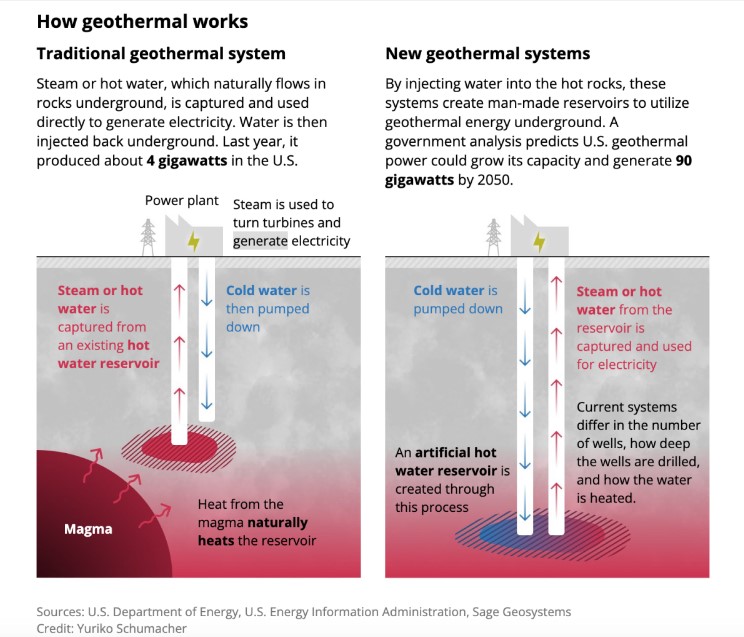By Laurelle Stelle msn.com, The Cool Down Nice read on geothermal energy produced from pumping water into fracked rock formations in deep dry oil wells. In Texas, several innovative new companies are combining clean energy technology and the expertise of former oil and gas industry employees to create a whole new generation of geothermal power plants, Grist reported. Geothermal energy is a promising source of power because it’s so dependable. The Earth’s natural warmth heats underground water reservoirs, sometimes to several hundred degrees. That hot water can can produce steam and power generators. The cold water is then pumped back underground. Unlike solar power, which is only available when the sun’s out, and wind power, which
Topics:
Angry Bear considers the following as important: climate change, geothermal, Hot Topics
This could be interesting, too:
NewDealdemocrat writes JOLTS revisions from Yesterday’s Report
Joel Eissenberg writes No Invading Allies Act
Joel Eissenberg writes How Tesla makes money
NewDealdemocrat writes January JOLTS report: monthly increases, but significant downward revisions to 2024
by Laurelle Stelle
msn.com, The Cool Down
Nice read on geothermal energy produced from pumping water into fracked rock formations in deep dry oil wells.
In Texas, several innovative new companies are combining clean energy technology and the expertise of former oil and gas industry employees to create a whole new generation of geothermal power plants, Grist reported.
Geothermal energy is a promising source of power because it’s so dependable. The Earth’s natural warmth heats underground water reservoirs, sometimes to several hundred degrees. That hot water can can produce steam and power generators. The cold water is then pumped back underground.
Unlike solar power, which is only available when the sun’s out, and wind power, which depends on the weather, geothermal runs 24/7 — all without creating pollution like oil or coal.
The one downside, Grist explained, is that past geothermal projects have depended on finding the right natural conditions: areas where hot water naturally comes up from below the ground. These areas exist but are in limited supply.
Now, however, there’s an alternative.
A startup called Sage Geosystems has taken over an empty well abandoned by the oil company Shell, Grist reported. The well didn’t contain gas, but it did burrow deep enough to reach the hotter layers of stone under the ground.
Using a technique similar to fracking, Sage Geosystems has started testing whether it can pump water down into the well to create cracks in the stone. The cracks absorb the water, and the stone heats it up. Then, the water is pumped back up to power a generator. According to Grist, Sage Geosystems performed a successful test in March.
Sage isn’t the only company pursuing this avenue. Fervo Energy is experimenting with creating two parallel wells, one to pump water down and one to bring it up, while Quaise Energy is using microwaves to drill into hotter areas than traditional drilling equipment can withstand, Grist revealed.
With these advances in technology, a government analysis predicts that the United States’s geothermal capacity could reach 90 gigawatts by 2050. That’s enough to power all of Texas, even at peak demand.
Calling this new technology a “big step change for humanity,” Quaise Energy co-founder Henry Phan added . . .
“It’s cool to work on a new product, but the fact that it can make an impact to . . . our life and our children’s life and their generation and their kids is monumental.”
In Texas, ex-oil and gas workers champion geothermal energy as a replacement for fossil-fueled power plants | Grist, Verónica Gabriela Cárdenas for The Texas Tribune.

